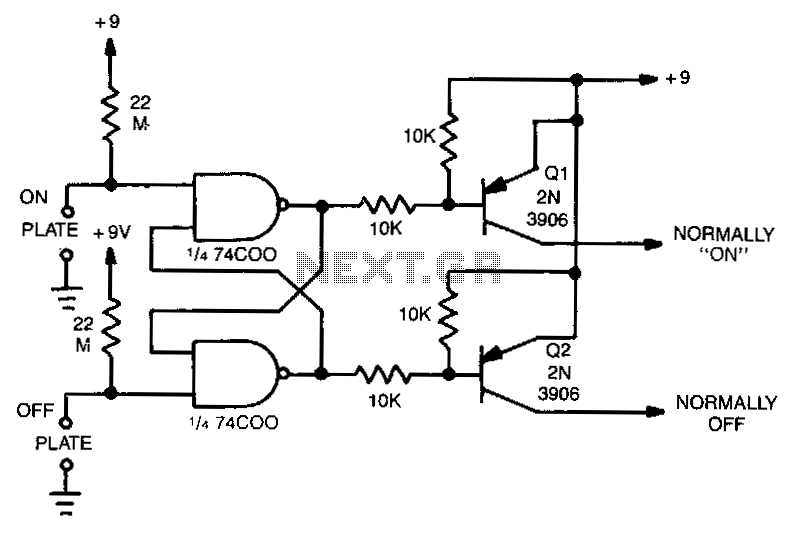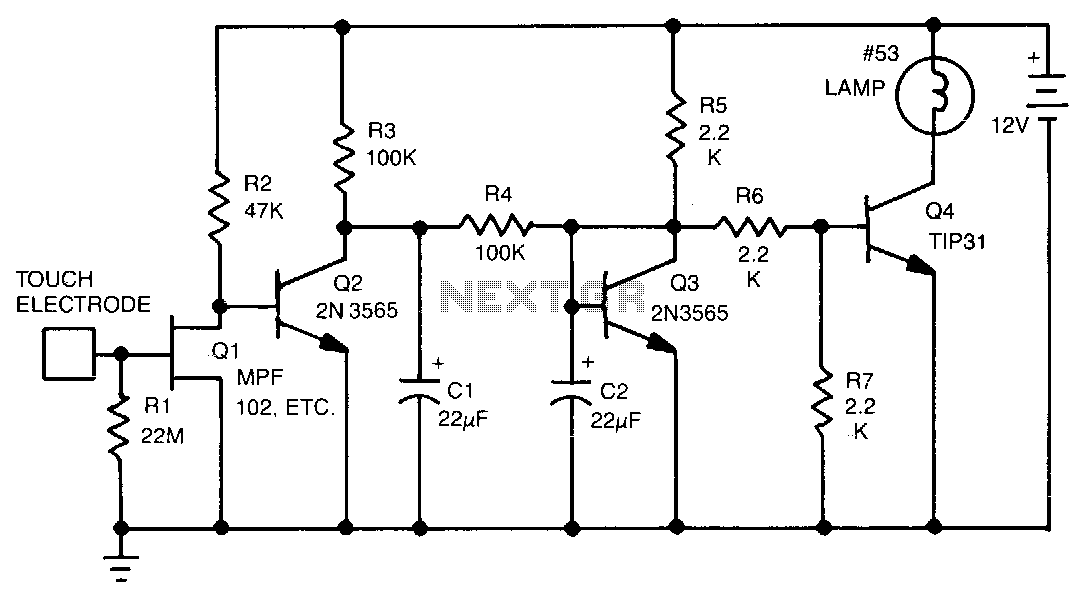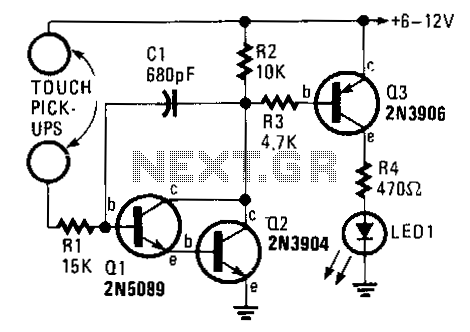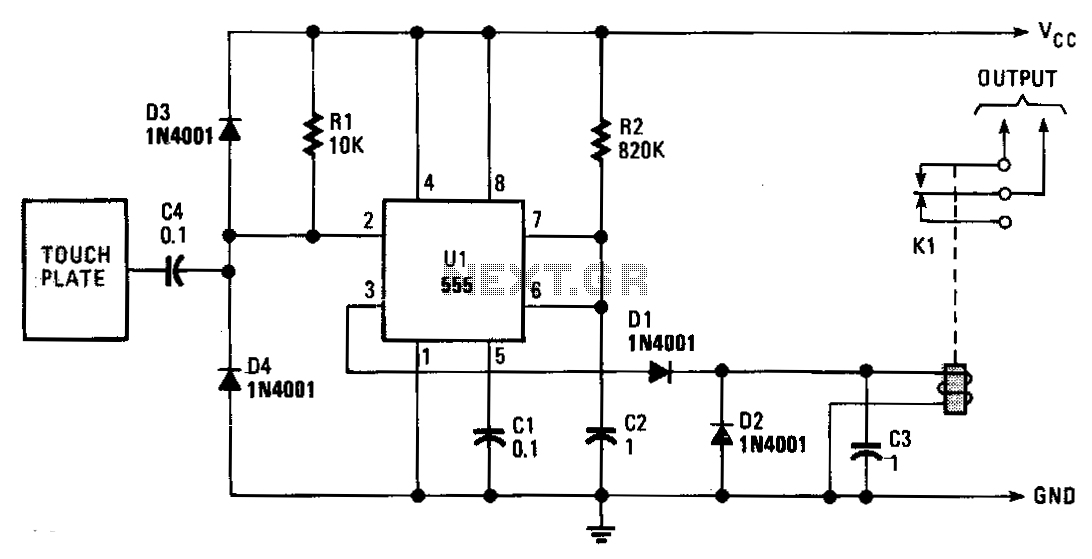
Touch-switch

When the plate is touched, the gate input becomes low, changing the state of the latch. Q1 and Q2 provide alternate N-on-N-off outputs.
The circuit described involves a touch-sensitive plate that, upon being activated, sends a low signal to the gate input of a latch. This action initiates a change in the state of the latch, which is a fundamental electronic component used for storing binary information. The latch can maintain its output state until it is triggered again, making it useful for applications such as memory storage or input control.
In this particular setup, two transistors, Q1 and Q2, are configured to operate in a complementary manner. When the latch is triggered by the low signal, it alternates the outputs of Q1 and Q2 between on (conducting) and off (non-conducting) states. This arrangement creates a toggle effect, where each touch to the plate results in a change in the output state of the transistors. The outputs can be utilized to drive various loads or indicate the state of the latch through visual feedback, such as LEDs.
The circuit may include additional components such as resistors and capacitors to ensure stability and prevent false triggering due to noise. The design can also incorporate debouncing techniques to ensure that a single touch does not cause multiple state changes, providing a clean and reliable operation. Overall, this touch-sensitive latch circuit can be effectively employed in user interface designs and various electronic applications requiring state retention based on user interaction.When the plate is touched, the gate input becomes low, changing the state of the latch. Q1 and Q2 give alternate N-on-N-off outputs. 🔗 External reference
The circuit described involves a touch-sensitive plate that, upon being activated, sends a low signal to the gate input of a latch. This action initiates a change in the state of the latch, which is a fundamental electronic component used for storing binary information. The latch can maintain its output state until it is triggered again, making it useful for applications such as memory storage or input control.
In this particular setup, two transistors, Q1 and Q2, are configured to operate in a complementary manner. When the latch is triggered by the low signal, it alternates the outputs of Q1 and Q2 between on (conducting) and off (non-conducting) states. This arrangement creates a toggle effect, where each touch to the plate results in a change in the output state of the transistors. The outputs can be utilized to drive various loads or indicate the state of the latch through visual feedback, such as LEDs.
The circuit may include additional components such as resistors and capacitors to ensure stability and prevent false triggering due to noise. The design can also incorporate debouncing techniques to ensure that a single touch does not cause multiple state changes, providing a clean and reliable operation. Overall, this touch-sensitive latch circuit can be effectively employed in user interface designs and various electronic applications requiring state retention based on user interaction.When the plate is touched, the gate input becomes low, changing the state of the latch. Q1 and Q2 give alternate N-on-N-off outputs. 🔗 External reference


